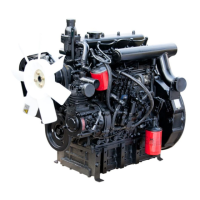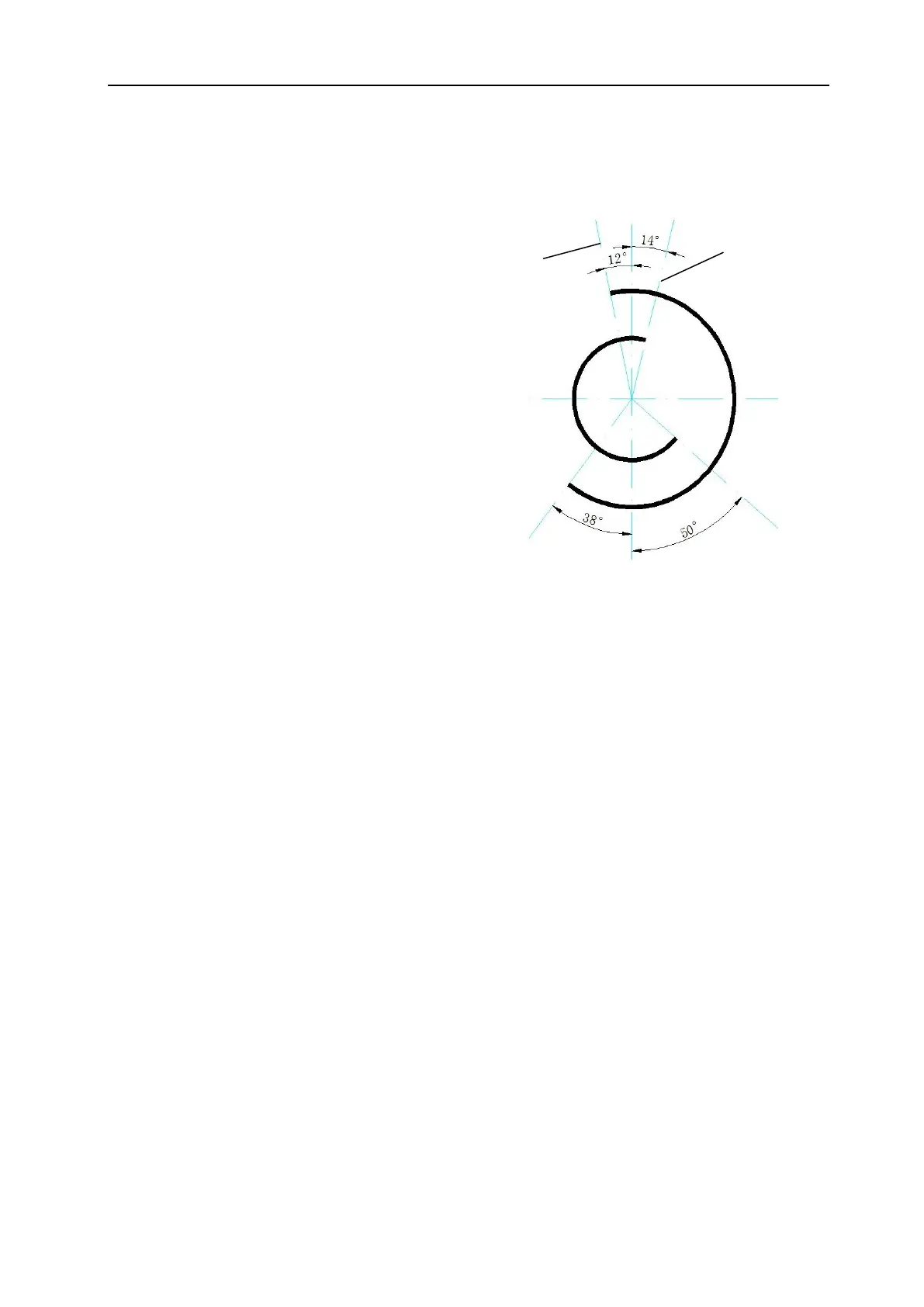MAINTENANCE MANUAL OF ENGINE
116
1.2 Valve timing
The valve timing means the actual opening and
closing time of the air intake valve and exhaust
valve, which is represented by a doughnut chart for
the crank angle in relation to the crank position of
the upper and lower dead points. This chart is called
the valve timing chart.
Intake valve open
Before upper dead point 12±3°
Intake valve closed
After lower dead point 38±3°
Exhaust valve open
Before lower dead point 50±3°
Exhaust valve closed
After upper dead point 14±3°
Theoretically, when the intake valve for the
four-stroke engine is open when the crank is at up-
per dead point, and closed when the crank is rotated
to the lower dead point; while the exhaust valve is
open when the crank is at lower dead point, and
closed when the crank is at upper dead point. The
air intake time and exhaust time requires a 180°
crank angle, respectively. However, actual speed of
the crankshaft of the engine is very high, and the
time for completing each stroke of the piston is very
short. Thus, the short-time intake or exhaust process
often lead to shortage in intake air or incomplete-
ness in discharge of exhaust gas of the engine, re-
ducing the engine’s power; therefore, the modern
engines adopt the design of prolonging the air in-
take time and exhaust time, that’s to say, the open-
ing and closing time of the valve is not the moment
when the crank is at upper dead point or at the low-
er dead point, but is advanced or prolonged by a
certain angle, so as to improve the air intake and
exhaust condition and enhance the engine’s power
performance.
For different engines, they are different in struc-
ture, type and speed, so the valve timing is also
varied, and is determined based on the engine's
performance requirements and through repeated
tests.

